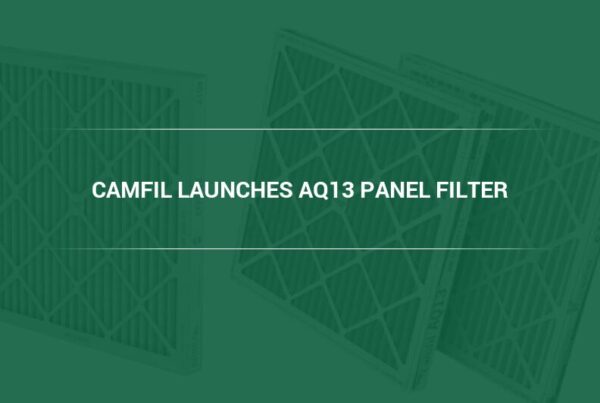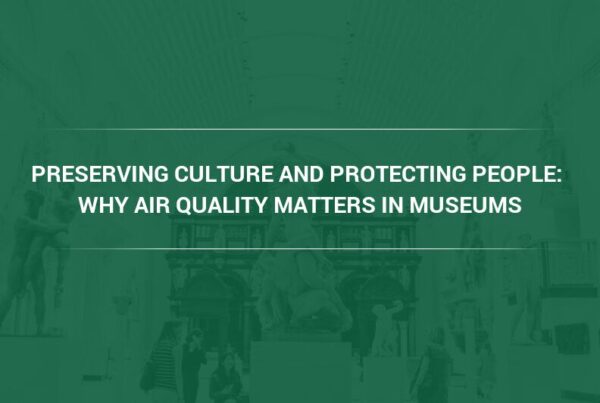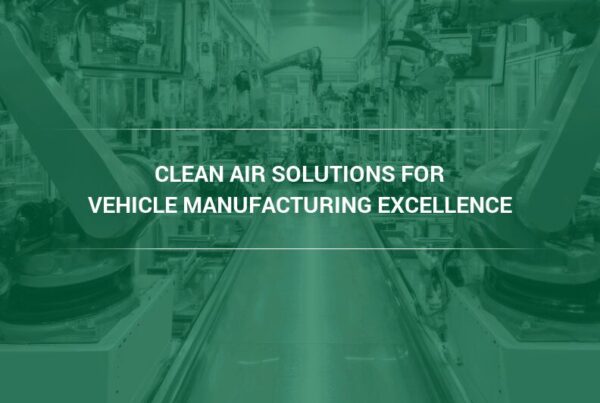Everything You Need to Know About Air Quality in K-12 Schools for the 2024-2025 Academic Year
Camfil is playing a critical role in improving indoor air quality in schools across the U.S. by providing advanced air filtration solutions that protect students, teachers, and staff from airborne pollutants and allergens. With a presence in key locations such as Addison, IL; Austin, TX; Birmingham, AL; Carolinas (SC/NC); Colorado Springs, CO;Dallas, TX; Denver, CO; Houston, TX; Kalamazoo, MI; Livonia, IL; Los Angeles, CA; Minneapolis, MN; Nashville, TN; Peoria, IL; Phoenix, AZ; Portland, OR; Puerto Rico; Sacramento, CA; Salt Lake City, UT; Santa Clara, CA; Syracuse, NY; and Tulsa, OK, Camfil supports school systems with custom-engineered filters designed to meet or exceed ASHRAE standards. By tackling airborne viruses, fine dust, and classroom-related contaminants, Camfil helps create safer, healthier learning environments – proving that clean air isn’t a luxury, it’s a lesson in public health.
The indoor air quality (IAQ) in schools has a notable impact on student and staff health, academic performance, and more. In this article, air quality experts from Camfil explain why air quality in schools matters and what school districts can do to improve school air quality.
Why Is Clean Air Important in Schools?
Clean Air Helps Students Learn
School districts, administrators, and teachers invest significant time and resources to ensure optimal student learning. An often disregarded aspect affecting the quality of education is the impact of air pollution on students’ cognitive functions.
Research indicates that high levels of indoor air pollution and inadequate ventilation have a detrimental impact on all nine cognitive function domains (basic activity level, applied activity level, focused activity level, task orientation, crisis response, information seeking, information usage, breadth of approach, and strategy), which are all associated with crucial for learning and carrying out complex tasks.
A 2016 study showed that better air quality and improved ventilation can double cognitive capacity (101% increase in cognitive test scores).
Children greatly benefit from having sharp cognitive function, as it plays a crucial role in developing critical thinking skills, absorbing information, and acquiring problem-solving abilities.
Clean Air Increases Productivity
Not only does clean air aid learning by boosting students’ cognitive capabilities, but it also increases productivity. Another study observed the impact of air quality on productivity by measuring office workers’ productivity rates over two eight-week periods. By removing common indoor air pollutants and increasing ventilation over time, the researchers found that poor indoor air quality can reduce productivity by as much as 10%.
Read more: Air Pollution and Productivity Explained
Air Pollution May Cause Increased School Absences
Studies have connected rises in fine particulate matter (PM 2.5) to higher rates of school absenteeism. A Utah-based study revealed that school absences tend to double the day following a “red air day,” when outdoor air quality hits hazardous levels per Air Quality Index data.
Red air days are rare in many parts of the US. However, researchers discovered that slight rises in fine particulate matter result in significantly more student absences in the subsequent days. This is probably due to the illness symptoms triggered by short-term exposure to particulate matter, such as:
- Coughing and sneezing
- A sore or scratchy throat
- Dizziness
- Headaches and even severe migraines
- Difficulty breathing
Adequate Air Filtration and Ventilation Prevent the Spread of Communicable Diseases
Numerous contagious diseases that often impact school-age children are airborne, spreading through infected respiratory droplets and aerosols floating in the air. Respiratory droplets, categorized as particulate matter, mostly fall into the PM2.5 size range and can be controlled with the correct air filtration technology.
Airborne diseases that frequently outbreak in schools include:
- COVID-19 and its variants
- Influenza
- RSV
- The common cold
- Chickenpox
- Whooping cough
Less prevalent yet more serious diseases like tuberculosis and measles are mostly transmitted through the air.
Air Pollutants Disrupt Healthy Brain Development
Besides harming children’s physical and cognitive health in the short term, it can impede young brain development. A 2023 study investigated the link between pollution exposure and brain connectivity using brain scan data from around ten thousand children aged nine and ten, a critical period for brain development.
Researchers compared the initial brain scans with follow-up scans taken two years later and utilized air quality data from the EPA and other sources to compute the exposure of each child to particulate matter, ozone, and nitrogen dioxide.
The data analysis (which controlled for other factors, like socioeconomic status, that could also affect brain development) discovered differences in brain connectivity among key brain regions associated with air pollution exposure. The study identified significant effects on brain areas such as the prefrontal cortex, amygdala, and hippocampus. Crucially, these impacts were evident even at pollution levels deemed safe by the EPA.
Air Pollution May Increase the Risks of Certain Psychiatric Disorders
Per the American Psychiatric Association (APA), early exposure to air pollution can pose a significant risk in the onset of specific disorders such as depression, schizophrenia, bipolar disorders, and even some personality disorders.
In an APA research review of over 100 studies on pollution’s effect on mental health, 73% showed that air pollution exposure raised negative mental health symptoms. Most studies examined the prefrontal cortex, the amygdala, and the hippocampus – brain regions that previous research on brain development also highlighted.
Research has also shown mental health impacts on children specifically. A different research review discovered that kids and teenagers face a higher risk of developing suicidal behaviors and depression symptoms when exposed to higher levels of long-term air pollution. Moreover, increased air pollution levels are associated with more emergency room visits for psychiatric issues among children, showing that short-term exposure can exacerbate existing mental health conditions.
Air Pollution Can Lead to Lifelong Health Complications
Another manner in which pollution exposure can impact students in the long run is by causing more severe and more frequent asthma attacks, which can then result in the development of childhood obesity.
The connection between asthma and childhood obesity is well established; kids with asthma are about 50% more likely than their non-asthmatic peers to become obese. This is likely because children learn to avoid the discomfort of asthma symptoms by taking up sedentary hobbies and reducing outdoor play and exercise.
Pollutants commonly present in schools like pollen, dust, and volatile organic compounds (VOCs) worsen asthma symptoms and provoke severe attacks. With asthma affecting more than six million American children, maintaining clean air indoors is crucial.
Where Does Air Pollution in Schools Come From?
Air pollution in schools is more prevalent than many people realize. Two primary categories of air pollution sources impact school air quality: ambient pollution infiltrating buildings from outside and indoor pollution from activities and materials inside.
Sources of ambient (or outdoor) air pollution, as well as the specific pollutants present, can vary widely depending on the geographical location of the school building, population density of the local area, local climate and soil composition, and proximity to significant pollution sources such as large roads, manufacturing facilities, and farms, in addition to other factors.
Even in areas where outdoor air is generally clean and healthy with low scores on the AQI, the daily activities in K-12 schools can generate significant pollution levels that affect students’ health and academic performance.
Numerous common materials and equipment emit volatile organic compounds (VOCs), some causing harmful short- and long-term effects independently, while others combine with air chemicals to create more hazardous pollutants. Sources of VOCs in schools can include:
- Cleaning supplies
- Printing and copying machines
- Pesticides
- Personal care products such as hairspray
- Art and shop class supplies, such as paint, varnish, wax, and glue
- Science/laboratory supplies and procedures
- Cheap furniture and flooring
- Dry-erase markers
Furthermore, particulate pollution can come from chalk dust, sawdust, debris from food preparation, by-products of combustion, excessive humidity, and occupants with communicable illnesses.
While school facilities management teams can aim to select materials and equipment that generate less pollution, it is evident from these lists that eliminating all pollution sources from schools is unattainable, as many are vital for learning activities or essential for a sanitary environment. Instead, the pollutants need to be extracted from the air post-emission. Keep reading to discover the types of air filters and purifiers most suitable for ensuring clean air in schools.
What Air Filters Are the Best for Schools?
Indoor pollution sources create gaseous pollutants, like VOCs, and particulate matter. Improving air quality in schools requires activated carbon filters and mechanical filters, such as HEPA or MERV-A-rated filters.
School facilities managers should consider the following factors when selecting air filters:
- What are the primary sources of pollution at my school? Can any of these be reduced at the source?
- What is the maximum filter depth the building’s HVAC is capable of housing?
- What is our overall budget, factoring in both initial price point and ongoing costs such as maintenance, energy, and filter replacement?
- How frequently can we feasibly conduct maintenance without disrupting the learning environment for students?
Filters that may be considered in combination with each other include:
- Camfil’s Dual 9 – a MERV 9/9A panel filter for particulate matter that is available in one-inch, two-inch and four-inch versions, has a 5-Star rating on the Energy Cost Index, and is guaranteed to last twelve months in commercial applications.
- Camfil’s AQ13 – a high-capacity MERV 13 pleated air filter that is compatible with existing air handling units, delivers an exceptionally long service life (twice as long as other MERV 13 pleated panel filters) and meets MERV 13 requirements while lowering operational cost.
- Camfil’s Durafil ES3 – a high-efficiency filter with an expected service-life of three years and guaranteed to reduce energy usage. Available in MERV 13A, 14A and 16A, this is the air filtration industry’s premier final filter.
- Camfil’s CityPleat– a combination filter that targets gaseous pollutants and particulate matter with a filter depth of two or four inches, making it ideal for a range of commercial and residential applications.
- Camfil’s CamCleaner CC500 – a premium air purifier that uses factory-tested and certified 99.99% medical-grade HEPA filters. The CC500 can also help increase air circulation and air changes per hour in classrooms by moving 500 cubic feet of air through its filters per hour and requires no specialized equipment or labor to install.
Consult an air quality expert for help determining which filters are right for your school.
About Camfil Clean Air Solutions
For more than half a century, Camfil has been helping people breathe cleaner air. As a leading manufacturer of premium clean air solutions, we provide commercial and industrial systems for air filtration and air pollution control that improve worker and equipment productivity, minimize energy use, and benefit human health and the environment. We firmly believe that the best solutions for our customers are the best solutions for our planet, too. That’s why every step of the way – from design to delivery and across the product life cycle – we consider the impact of what we do on people and on the world around us. Through a fresh approach to problem-solving, innovative design, precise process control, and a strong customer focus we aim to conserve more, use less and find better ways – so we can all breathe easier.
The Camfil Group is headquartered in Stockholm, Sweden, and has 30 manufacturing sites, six R&D centers, local sales offices in 35+ countries, and about 5,600 employees and growing. We proudly serve and support customers in a wide variety of industries and in communities across the world. To discover how Camfil USA can help you to protect people, processes and the environment, visit us at www.camfil.us/
##
Media Contact:
Lynne Laake
Camfil USA Air Filters
T: 888.599.6620
E: Lynne.Laake@camfil.com
F: Friend Camfil USA on Facebook
T: Follow Camfil USA on Twitter
Y: Watch Camfil Videos on YouTube
L: Follow our LinkedIn Page



